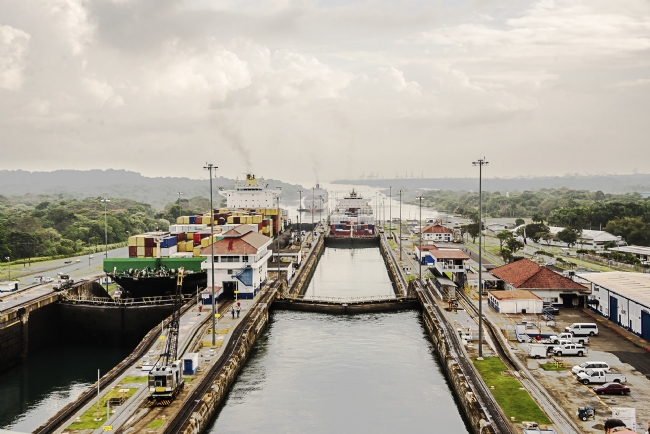Changing Course
Share this blog
Latest Maritime Vacancies
Business Development – Shipmanagement – Dubai
Office Manager – London
Shipping Paralegal – London
Shipping Manager – Singapore
Office Administrator – London
The unprofitable industry

After a summer of extraordinary disasters in the USA and other parts of the world the global economy struggles to show growth and faces huge uncertainty over the future of world peace.
Shipping which still carries more than 90% of world physical trade has shown little growth in demand for its services and in some sectors a decline.
Shipping started this decade with an oversupply of ships and yet has continued to expand its capacity with an unprecedented newbuilding program in all sectors.
Despite greater ship scrapping which has reached its maximum capacity the surplus has grown and newbuilding orders continue to appear.
The majority of the new ship orders are now in Chinese shipyards which are supported by Chinese Export financing and the establishment of several huge Chinese leasing companies. China will continue to finance and deliver new ships provided they are chartered to Chinese interests as it continues to keep freight rates down on both its imports and exports.
Thus the carrying capacity of the ships in most sectors exceeds demand resulting in the spot market rates in the dry and wet bulk sectors barely covering the operating costs of the ships and their associated debt service.
This benefits the cargo interests in raw materials and the manufacturers of finished goods whose customers are across the oceans. The cost of shipping a container to the USA from China, Japan, Korea or Taiwan is far less than the trucking costs incurred onshore in the USA and there is no revenue for returning the empty box.
The tanker sector depends on shipping crude oil from its source to refineries and then moving the oil products and chemicals to the end users. The discovery and development of new sources of crude oil and natural gas in the USA, combined with new onshore pipelines has led to the country looking to shortly becoming energy independent and an exporter of natural gas.
The opening of the newly enlarged Panama Canal last year has fundamentally changed the supplying of natural gas from the USA to Korea and Japan and ultimately China. It also has enabled large, but not giant, container ships to transit and discharge at ports up and down the US east coast.
It will have a meaningful effect on shipping with countries in Central America and the Caribbean as the large ships that can transit the Canal can also dock at ports that the giant ships cannot.
The rush to build ever larger container ships is questionable as they are aimed at the export trades from China, Taiwan, Korea and Japan to the USA and Europe and rarely travel full on the backhaul routes.
The principal objective of the new US Administration is to bring manufacturing back to the USA along with trillions of dollars of US company profits that presently are legally held offshore. This will significantly reduce cargo volumes across the Pacific and many of the giant ships may well become albatrosses and the expensive port enlargements redundant.
Financial analysts have mixed views about the future for shipping, concentrating mainly on the supply of the existing fleets and the newbuilding orderbook. Little attention is paid to the cargo interests and their future demands for shipping services.
Globalisation is stalled as some nations still look for growth over the next decade while others face the reverse and countries such a China and India look for their growth in their domestic markets.
Oil for instance will be in great demand globally but the energy self-sufficiency objectives of the USA, the growth of tanker fleets in the Middle East and the demise of North Sea oil, Venezuelan oil and the decline of Nigerian exports all combine to suggest reduced demand for the large crude carriers, yet the orderbook continues to enlarge the fleets.
The dry cargo sector is still plagued with over-supply and too many different ship sizes. Its main markets are the movement of raw materials which will definitely change as the major nations revise their manufacturing policies and the devastated countries in the Middle East remain stagnant.
This all combines to remind shipowners and their investors that shipping is a service industry that has lost control of its markets. Too much of the activity in the capital markets has focused on ship values, encouraging newbuildings over continuing to operate well maintained and well managed existing ships that can operate for 20 years.
Yet the revenue streams are barely sufficient to cover operating costs and some debt service but fail to produce surpluses to support the equity needed in the future for fleet replacements.
Cargo interests can clearly afford to pay more for the shipping services they require and have historically committed to time charters to secure these services and develop close relationships with shipowners. The short-term mentality of today’s investors has caused the breakdown of these relationships as the ships mostly trade on the spot markets with minimal expenditure on maintenance and can be sold at any time.
Whilst the spot rates are usually higher than the time charter rates the ships usually average less than 300 paid days, provide their own fuel and rarely have regular trading routes.
Despite the extraordinary rises in the US stock markets this year shipping stocks continue to show little or no growth and are treated like penny stocks traded by day traders.
Shipping needs to re-establish itself as it continues to carry 90% of physical world trade, get out from under the influences of the capital markets and re-secure the interests of the commercial banks by focusing on securing the revenue streams from the cargo interests.
Paul Slater, First International